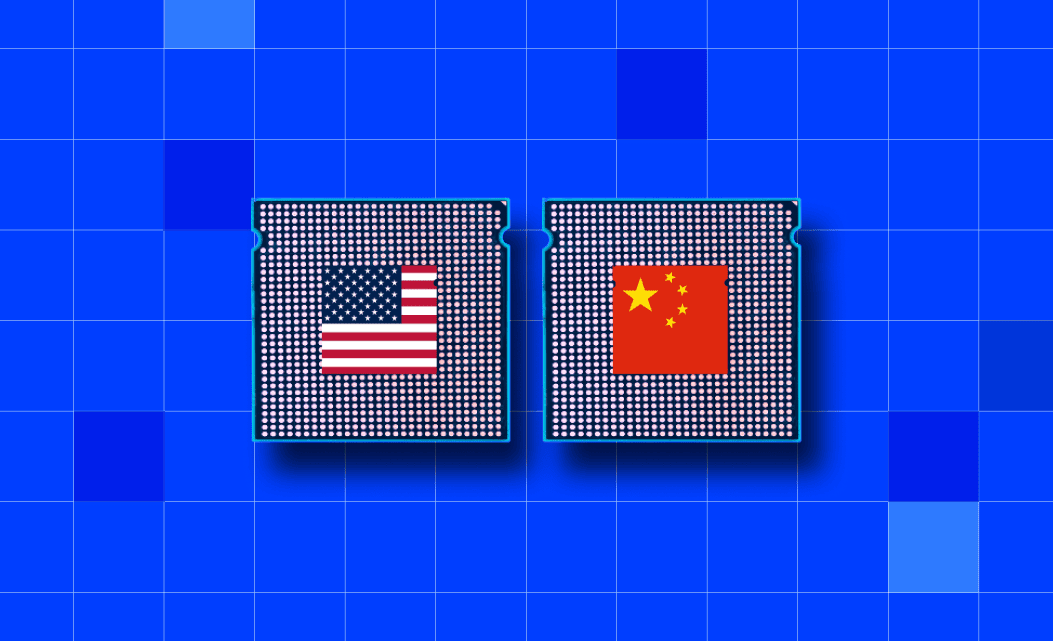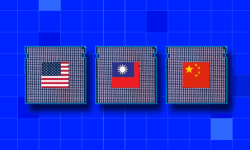Biden’s vision for the US to gain a leg up over China in semiconductor manufacturing is causing a multi-hundred billion dollar conundrum. To control its need for microchips, the US is funneling capital to reinvigorate its domestic semiconductor manufacturing processes. To that end, in July 2022, Congress passed the China Competition Bill or “CHIPS-plus” package, which aimed to allocate $52 billion in funding to US companies producing computer chips and offered a tax credit for investment in chip manufacturing.
And to further secure the US’s place in the race for semiconductor dominance, Biden signed an executive order in August that will narrowly prohibit certain US investments in sensitive technology in China and require government notification of funding in other tech sectors, including semiconductors and microelectronics.
However, the consequences of these restrictions are extensive, as China is responsible for roughly 80% of global electronics manufacturing and constitutes a substantial market for semiconductor consumption. Adding complexity to the situation, almost all major chip manufacturers have established customer relationships within China.
Additionally, Forbes is reporting on a semiconductor chip emerging from Shanghai-based manufacturer, Micro Electronics Equipment Group, that could revolutionize the industry and render Biden’s ban moot. As tensions rise over meeting supply chains demands and access to materials, the fate of the semiconductor industry—projected to be valued at $1 trillion by the end of the decade—is in question.
China’s New Chip
Recent news suggest that China has made headway in circumventing the US’s ban of exporting materials to Chinese semiconductor manufacturers. According to reports from Beijing’s Securities Daily, Micro Electronics Equipment Group has developed a lithography machine capable of manufacturing transistors that are on par with those produced by ASML equipment. These transistors are essential components for advanced smartphones, computers, and cutting-edge weaponry.
The primary challenge had always revolved around the size of these transistors. The smaller the transistors a machine can produce, the more that can be accommodated on a single chip. Initially, it was believed that China couldn’t manufacture transistors smaller than 7nm, the standard measurement for their size. However, recent research efforts appear to have shattered that limitation, pushing towards even smaller transistors at the 5nm scale.
Further, the Shanghai-based Semiconductor International Manufacturing Corporation (SMIC) now appears to have secured access to domestically produced advanced chips, potentially diminishing the effectiveness of Biden’s bans on the sale of advanced chips and chip manufacturing equipment. While experts predicted it would be a matter of time before China discovered a solution to Biden’s ban, the speed at which this development has unfolded is unexpected considering the U.S. restrictions were only put in place last year.
These strings of events leave two major questions needing to be answered. First, how does the performance of the new Chinese machine stack up against the existing equipment in the United States, Japan, and the Netherlands? And more importantly, how swiftly can China harness this breakthrough to expedite the advancement of advanced chips?
If the responses to these questions entail numerous limitations and delays, China’s breakthrough may not have an immediate impact on the Sino-American chip rivalry. However, if the answers are less encumbered, China will unmistakably emerge victorious in this chip rift, prompting competition with the United States to shift its focus to other arenas.
The ball is now in Washington’s court to determine the next steps in this ongoing contest.
Washington’s Stance on Chinese Chip Competition
Many are wondering if this news is cause for concern in Washington. Most legislators aren’t too worried. While China is a major producer of various semiconductors, it lacks some of the advanced equipment required for manufacturing the fastest processors, chips, and memory storage devices.
In fact, Chinese semiconductor manufacturers heavily rely on importing chips and equipment from global companies, including Taiwan’s TSMC, US.-based Intel, Nvidia, South Korea’s SK Hynix, and Samsung, the Netherlands’ ASML Holdings, and Japan’s Nikon and Tokyo Electron. Consequently, Chinese manufacturers like Semiconductor Manufacturing International Corporation (SMIC) depend significantly on the global semiconductor industry for the machinery needed to produce high-end chips.
“China has this goal by 2025 to be getting a majority of semiconductors within China. They set aside over the years $250 billion or something like that, which is a far cry than the $52 billion in the CHIPS Act. I think people are afraid that China may do something with Taiwan to try to do something. Maybe they will embolden what would happen between Russia and Ukraine. That’s, I think, a very real concern. Over time, we’ll see whether it’s real or not. I’ve seen news about that. I think it’s really important that it gets onshore. I think Japan is thinking about finally actually building out some fabs in Japan again.”
– Tower Semiconductor | Former Account Executive
For example, a significant number of high-end logic and memory chips are produced using extreme ultraviolet (EUV) and deep ultraviolet (DUV) lithography machines. The US chip-export restrictions to China primarily targeted EUV machines, which are crucial for the most advanced process nodes like 3 nm, 5 nm, and 7 nm. Essentially, reducing the distance between transistors results in faster and more power-efficient chips. The smallest process nodes, such as 3 nm, 5 nm, and 7 nm, are essential for developing artificial intelligence systems, smartphones, cloud data centers, self-driving cars, and military applications.
The bottom line: While a new chip from China could certainly draw interest from manufacturers, without an adequate supply of materials, Chinese companies won’t be able to sustain demand long-term.
NVIDIA’s Semiconductor Concerns
While Washington sees China as hindering the growth of a domestic semiconductor industry, NVIDIA sees any additional US-imposed restrictions on chip exports to China being the biggest threat. Earlier this year, multiple reports indicated that Washington was contemplating fresh export limitations on chips related to AI, a domain in which NVIDIA specializes.
In a filing submitted to the SEC submitted at the end of last month, NVIDIA revealed that on August 26, it had been informed by the US government about a newly imposed licensing requirement for future exports to China, including Hong Kong. This measure was implemented to mitigate the potential risk of these products being used by the Chinese military. However, NVIDIA further specified that the restriction would impact the sales of its high-end A100 and H100 graphics processing units sold to China.
The company anticipates a potential loss of $400 million in sales within China for the current quarter—a notable shift from its earlier revenue projection of $5.9 billion and a direct consequence of Biden’s regulation. While the ban also extends to sales in Russia, NVIDIA clarified that it currently has no paying customers in that region.
NVIDIA has indicated that it is in the process of applying for a license to continue some of its exports to China. However, the company remains uncertain whether the U.S. government will grant the requested exemption.
“We are working with our customers in China to satisfy their planned or future purchases with alternative products and may seek licenses where replacements aren’t sufficient,” an NVIDIA spokesperson told CNBC. “The only current products that the new licensing requirement applies to are A100, H100 and systems such as DGX that include them.”
Forecasting the Future of Semiconductors
Staying on top of macroeconomic events and industry regulations is not only integral to being a front-runner in the semiconductor sector, but integral to surviving in today’s volatile market.
To find the information you need to make confident business decisions, you would typically have to search across disparate sources on consumer-grade search engines. With AlphaSense, regulatory filings and other disclosures (i.e., SEC and global filings, transcripts on earnings calls and investor conferences, investor relations, press releases, etc.) from more than 68,000 companies worldwide are centralized, indexed, and easily searchable in one single platform.
Many believe AI is a newfound advantage for the semiconductor space, empowering organizations to remain agile, automate critical insights, and deepen their most valuable relationships with high-value information. Read how AlphaSense has empowered a leading semiconductor manufacturing company to live by their mantra “Think big, test small, fail fast, and learn quick.”
Discover how a market intelligence platform like AlphaSense can help you make smarter strategic deals.
Start your free trial of AlphaSense today.




